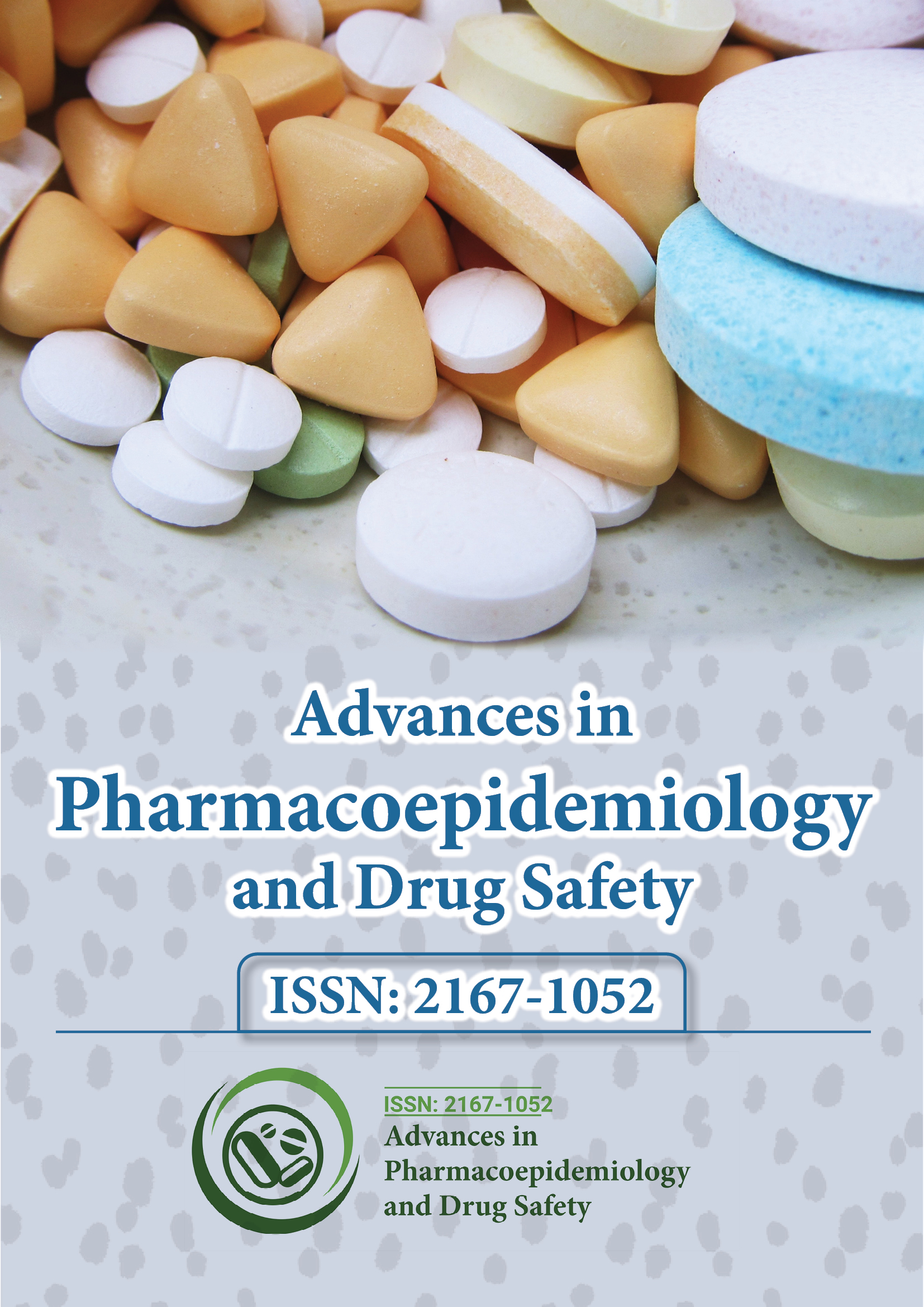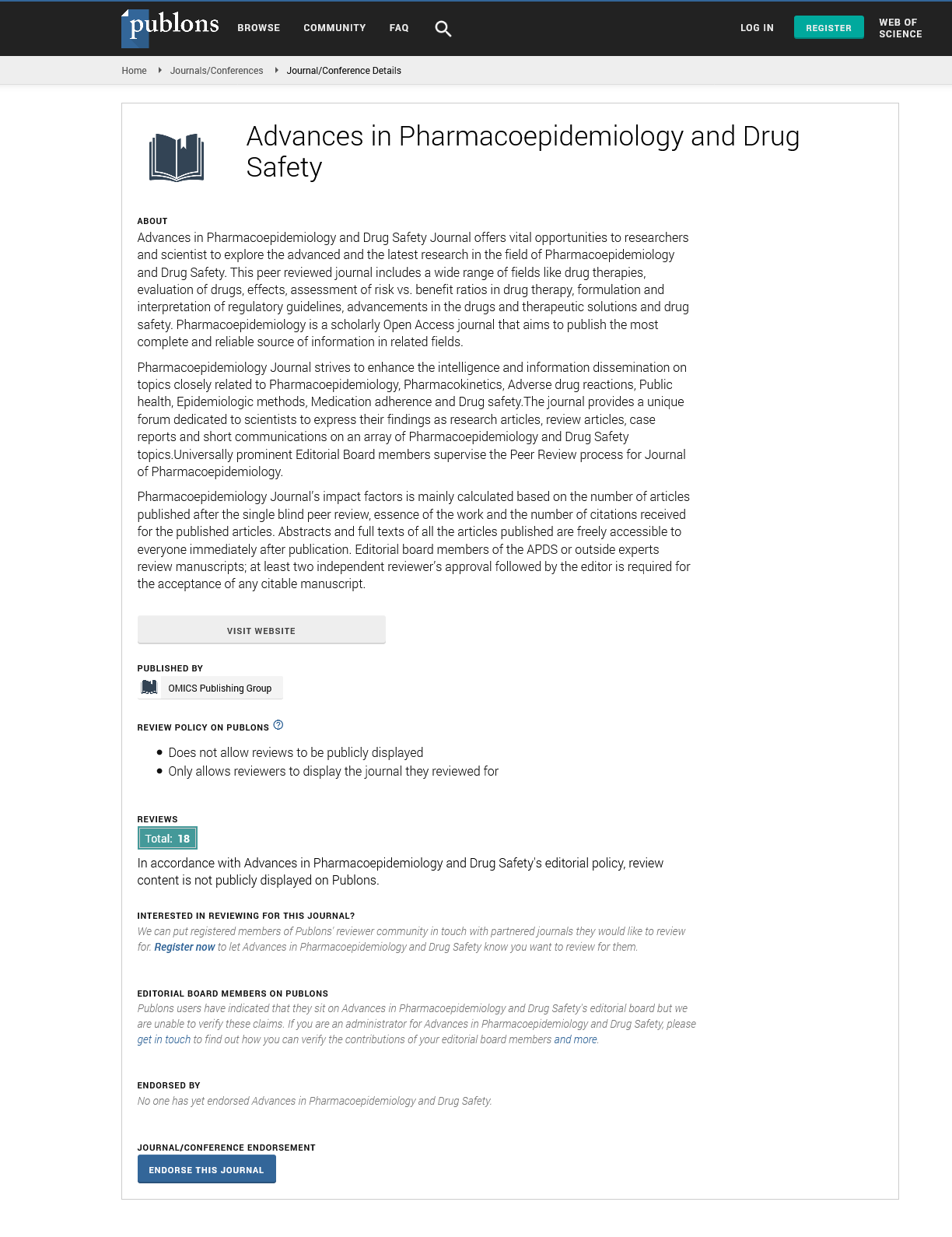Indexed In
- Open J Gate
- Genamics JournalSeek
- Academic Keys
- JournalTOCs
- RefSeek
- Hamdard University
- EBSCO A-Z
- SWB online catalog
- Publons
- Geneva Foundation for Medical Education and Research
- Euro Pub
- Google Scholar
Useful Links
Share This Page
Journal Flyer

Open Access Journals
- Agri and Aquaculture
- Biochemistry
- Bioinformatics & Systems Biology
- Business & Management
- Chemistry
- Clinical Sciences
- Engineering
- Food & Nutrition
- General Science
- Genetics & Molecular Biology
- Immunology & Microbiology
- Medical Sciences
- Neuroscience & Psychology
- Nursing & Health Care
- Pharmaceutical Sciences
Opinion Article - (2025) Volume 14, Issue 2
Evaluating Medication Adherence Through Pharmacoepidemiology
Oliver Schmidt*Received: 29-May-2025, Manuscript No. PDS-25-29842; Editor assigned: 31-May-2025, Pre QC No. PDS-25-29842; Reviewed: 14-Jun-2025, QC No. PDS-25-29842; Revised: 20-Jun-2025, Manuscript No. PDS-25-29842; Published: 28-Jun-2025, DOI: 10.35248/2167-1052.25.14.396
Description
Medication adherence is widely recognized as a key factor in determining the success of medical treatments. Even the most advanced and effective medications cannot yield desired outcomes if patients do not follow prescribed regimens. Pharmacoepidemiology plays a central role in analyzing medication adherence across large populations, helping to understand how lapses in adherence affect both drug safety and therapeutic effectiveness. By integrating data from pharmacy records, hospital databases and patient surveys, researchers are able to map out trends in adherence across various diseases and demographic groups. This comprehensive view enables healthcare systems to design better interventions for at-risk populations and develop strategies that align more closely with real-world patient behavior. Furthermore, these insights reinforce the importance of continued communication between healthcare providers and patients, ensuring that patients understand their treatment plans and the importance of following them consistently.
Research in pharmacoepidemiology has shown that adherence to long-term therapy commonly decreases over time. Many patients begin treatment with high motivation, only to reduce or stop medication intake after a few months often because symptoms have improved or because of emerging side effects. This trend is evident across chronic conditions such as hypertension, asthma, diabetes and mental health disorders. Understanding when and why patients deviate from treatment allows health professionals to design timely interventions aimed at supporting sustained medication use. Evidence has also highlighted the clinical consequences of poor adherence. Inconsistent use of antihypertensive is linked to increased risks of stroke and heart failure. Similarly, interruptions in antiretroviral therapy for HIV patients can accelerate disease progression and skipped doses of oral chemotherapy have been associated with lower survival rates in cancer patients. These examples emphasize how vital it is to address adherence issues proactively and to embed monitoring practices into routine healthcare. It also suggests a broader role for healthcare providers not just in prescribing but in supporting patients throughout their treatment journey.
Technological innovations have significantly advanced how adherence is measured and improved. For instance, pharmacy refill data can be used to calculate metrics such as the Medication Possession Ratio (MPR), which estimates the extent to which patients have access to their prescriptions. Electronic tools like smart pill bottles record when doses are taken, providing highly accurate, real-time adherence data. Though expensive, these tools offer a more objective assessment than patient self-reports. In parallel, digital health solutions such as reminder apps and wearable devices are being explored for their potential to improve adherence across large populations. Beyond technology, pharmacoepidemiologic studies delve into how social and economic factors affect adherence. Factors like low income, lack of education, limited social support and cultural beliefs can significantly influence a patient’s likelihood of staying on treatment. For example, high out-of-pocket costs often force patients to delay or skip doses. Similarly, misinformation or stigma associated with medications can result in premature discontinuation. Identifying these barriers helps public health agencies and policymakers craft targeted solutions such as subsidized drug programs, patient education campaigns and community support networks to ensure that patients can afford and understand their treatments.
Adherence is not only tied to treatment success but also directly impacts patient safety. Irregular medication use can lead to severe health risks, especially with drugs that require steady dosing. For example, inconsistent use of anticoagulants increases the likelihood of either clotting or bleeding, depending on the fluctuations in drug levels. Abrupt discontinuation of corticosteroids can lead to adrenal insufficiency and other complications. Pharmacoepidemiology helps to flag such risks and guides clinicians in recognizing which medications are most sensitive to dosing inconsistencies. International collaboration has further strengthened this research. By comparing adherence behaviors in different countries, researchers have uncovered variations influenced by insurance structures, prescription refill policies and cultural attitudes toward medication. Comparative studies between Europe and North America, for instance, reveal different patterns of medication access and usage, which can inform globally relevant strategies to improve adherence.
Ultimately, the growing field of pharmacoepidemiology demonstrates that adherence is not just a matter of individual responsibility but a complex public health issue. By combining population-level data analysis, behavioral insights and digital monitoring tools, this discipline offers critical solutions to enhance therapeutic outcomes. Its findings inform not only clinical practices but also broader healthcare policy, ensuring that medications deliver maximum benefit while minimizing preventable harm. As global healthcare systems increasingly adopt value-based models of care, promoting consistent medication adherence will be essential to achieving sustainable and effective long-term health outcomes.
Citation: Schmidt O (2025). Evaluating Medication Adherence Through Pharmacoepidemiology. J Adv Pharmacoepidemiol Drug Saf. 14:396.
Copyright: © 2025 Schmidt O. This is an open access article distributed under the terms of the Creative Commons Attribution License, which permits unrestricted use, distribution and reproduction in any medium, provided the original author and source are credited.

